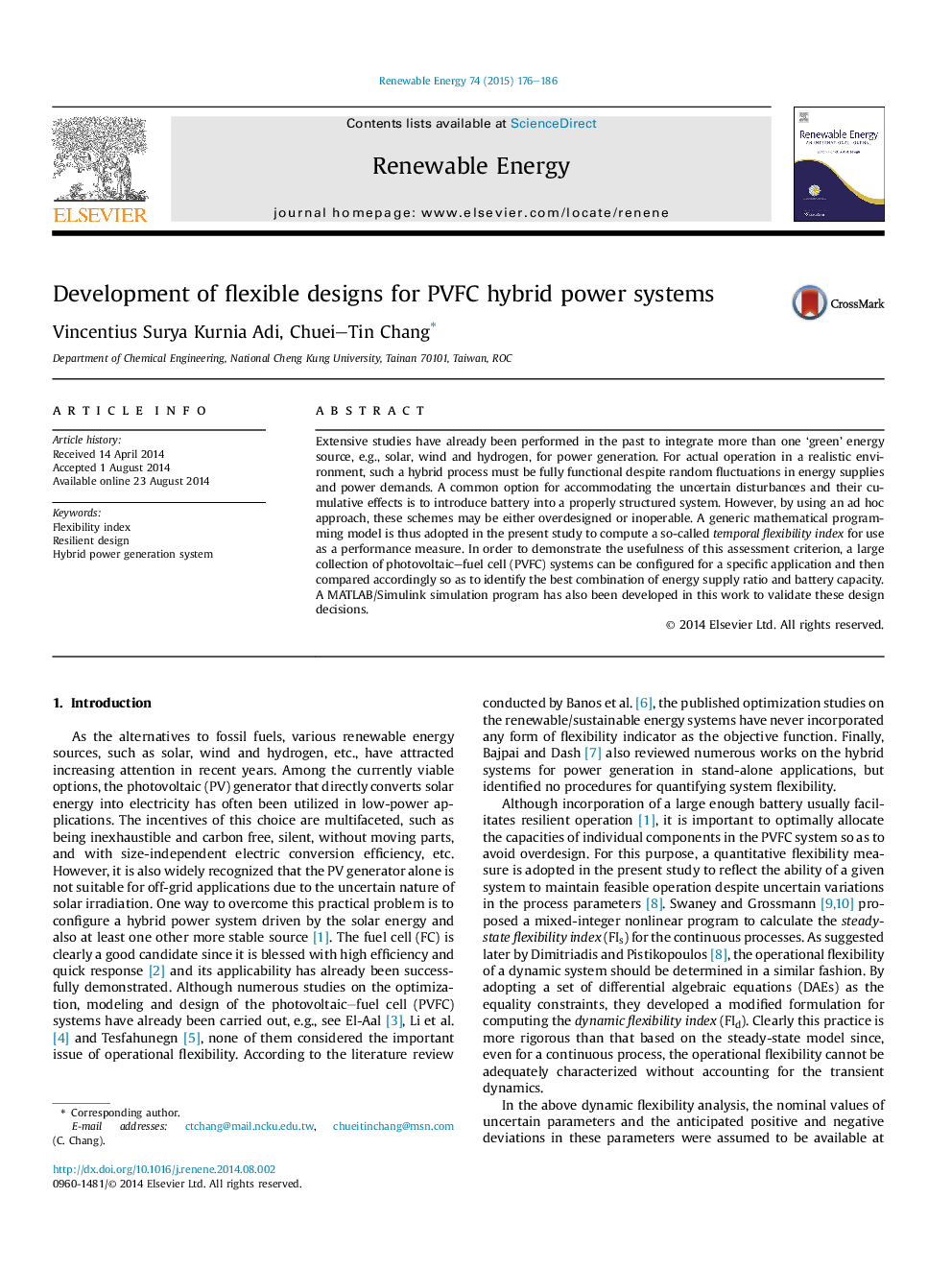| Article ID | Journal | Published Year | Pages | File Type |
|---|---|---|---|---|
| 299966 | Renewable Energy | 2015 | 11 Pages |
•Temporal flexibility analysis has been applied to PVFC hybrid power systems.•Operational flexibility is a function of energy supply ratio and battery size.•Battery cut-off voltage and maximum discharge current are the critical constraints.•Energy supplies and demand profiles exert profound impacts on system operability.•Temporal flexibility analysis is effective to address various design issues.
Extensive studies have already been performed in the past to integrate more than one ‘green’ energy source, e.g., solar, wind and hydrogen, for power generation. For actual operation in a realistic environment, such a hybrid process must be fully functional despite random fluctuations in energy supplies and power demands. A common option for accommodating the uncertain disturbances and their cumulative effects is to introduce battery into a properly structured system. However, by using an ad hoc approach, these schemes may be either overdesigned or inoperable. A generic mathematical programming model is thus adopted in the present study to compute a so-called temporal flexibility index for use as a performance measure. In order to demonstrate the usefulness of this assessment criterion, a large collection of photovoltaic–fuel cell (PVFC) systems can be configured for a specific application and then compared accordingly so as to identify the best combination of energy supply ratio and battery capacity. A MATLAB/Simulink simulation program has also been developed in this work to validate these design decisions.
